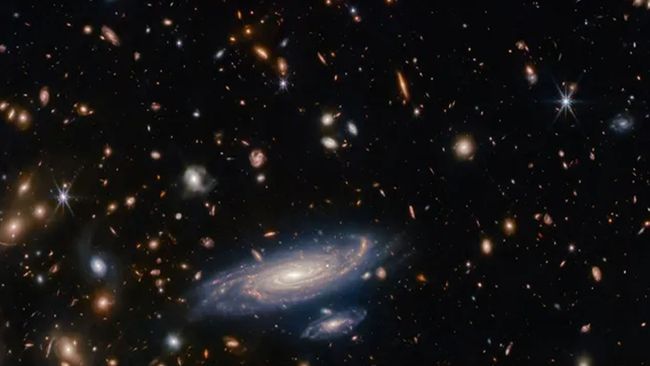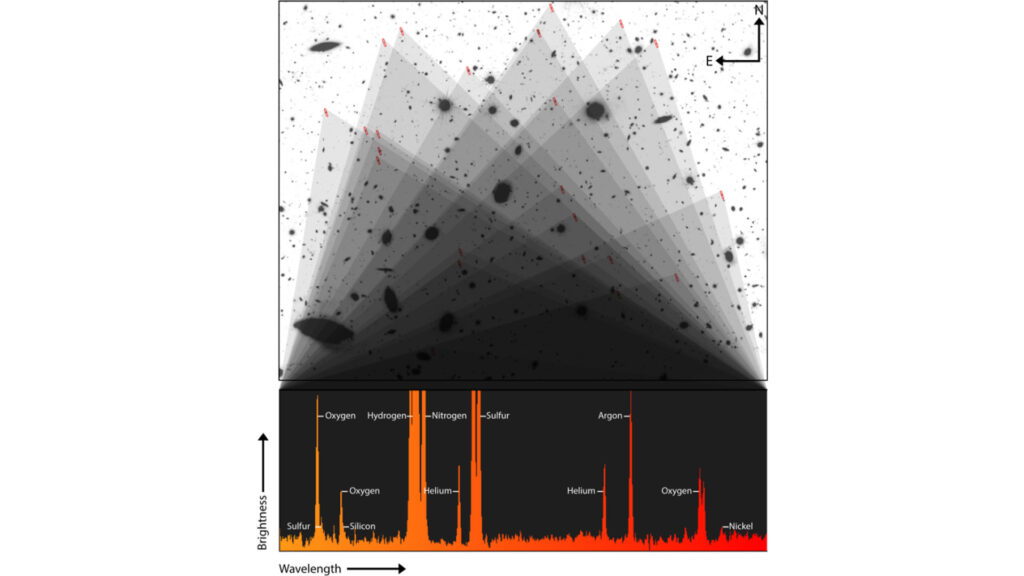‘Adolescent’ Galaxies in the Early Universe Harbor Enigmatic Heavy Elements, Unveiled by the James Webb Space Telescope
Galaxies originating within the initial 2 to 3 billion years of the universe display significantly higher quantities of heavier elements and seem to possess much higher temperatures than what scientists had anticipated.
The farther we peer into space, the deeper into the past we glimpse. Light originating from some of the younger galaxies in our universe must traverse billions of years to reach us, capturing rich information from the cosmic dawn as detected by our instruments. This light not only unveils our cosmic origins but also provides insights into our potential future.

In an effort to comprehend the evolution of certain early universe “teenage” galaxies, a team of astrophysicists led by Northwestern University has scrutinized data from the James Webb Space Telescope (JWST), which peered into realms that formed just two to three billion years after the Big Bang.
These observations have yielded intriguing surprises. In particular, the team examined results from the Chemical Evolution Constrained using Ionized Lines in Interstellar Aurorae (CECILIA) Survey, revealing that these galaxies not only appear hotter than anticipated but also appear to harbor heavy elements such as nickel.

The scientists dedicated a continuous 30-hour period to studying 33 distant galaxies, merging the wavelengths of light collected from 23 of them to construct a composite image that unveils insights into these structures. These spectra provide information about their average temperatures and the elements present within them.
While sacrificing the details of individual galaxies, the composite picture offers a broader perspective of an average galaxy, revealing fainter features. Allison Strom, the lead author and assistant professor of physics and astronomy at Northwestern University, explained, “This washes out the details of individual galaxies but gives us a better sense of an average galaxy. It also allows us to see fainter features.”
The composite image of the galaxies showcased the presence of eight identifiable elements: Hydrogen, helium, nitrogen, oxygen, silicon, sulfur, argon, and the unexpected inclusion of nickel, a heavier element than iron on the periodic table.
The revelation of nickel surprised the researchers, as it is rarely observed even in older, nearby galaxies, which have undergone multiple life cycles of stars and supernovas, allowing heavier elements to synthesize and disperse throughout the galaxy.
Allison Strom expressed her astonishment, stating, “Never in my wildest dreams did I imagine we would see nickel.” She highlighted that observing nickel is uncommon, emphasizing, “Elements have to be glowing in gas in order for us to see them. So, in order for us to see nickel, there may be something unique about the stars within the galaxies.”
Strom proposed a connection between the higher observed temperatures in these early galaxies and their distinct chemical composition, suggesting, “Ultimately, the fact that we see a higher characteristic temperature is just another manifestation of their different chemical DNA because the temperature and chemistry of gas in galaxies are intrinsically linked.”
The study was published Nov. 20 in the journal The Astrophysical Journal Letters.
Do not forget to share your opinion with us to provide you with the best posts !



0 Comments